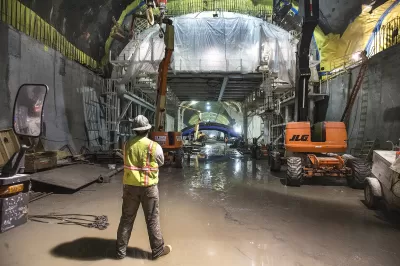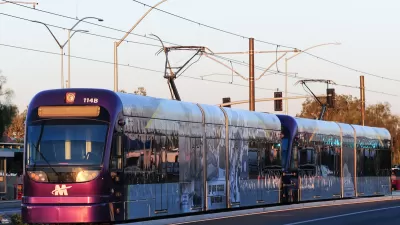Charles Marohn responds to Noah Smith's article asking why American Infrastructure is so expensive and delivers a plan to attack the problem.

American infrastructure incentives are badly misaligned, according to an article by Noah Smith, published in May for Bloomberg.
Following up on that story for Strong Towns, Charles Marohn argues that until we fix the incentives for infrastructure, "throwing more money at this system is simply pouring good money after bad." Marohn starts with the example of a policy that provides federal funding based on lane miles of highways, and programs that pay for around 90 percent of new construction but only 50 percent of maintenance. Marohn reasons that these incentives don't push projects to be well-managed and cost-efficient, nor built with the goal to endure.
To fix these types of misalignments, Marohn outlines a plan in four parts. He argues that localities should be given tools and encouraged to raise their own funding for these projects, so that they will be incentivized not to impress federal services whose rules and mandates have to be made broad enough to serve the whole country but, instead, built to serve their own local needs.
To reward planning for the long-term, Marohn says, "[t]he only tool I would take off the table -- or at least constrain -- is debt. Cities should have the ability to take on cash flow take and make strategic investments with debt, but they should not be able to live beyond their means today -- intentionally or not -- at the expense of future generations." He goes on to suggest that funding should be tied to very specific initiatives, like a toll or sales tax to pay for specific maintenance. Lastly, he suggests tying the design, construction, and warranty for projects into a single contract so contractors are motivated to create lasting success instead of just passing the buck.
FULL STORY: THIS IS WHY INFRASTRUCTURE IS SO EXPENSIVE

Alabama: Trump Terminates Settlements for Black Communities Harmed By Raw Sewage
Trump deemed the landmark civil rights agreement “illegal DEI and environmental justice policy.”

Study: Maui’s Plan to Convert Vacation Rentals to Long-Term Housing Could Cause Nearly $1 Billion Economic Loss
The plan would reduce visitor accommodation by 25% resulting in 1,900 jobs lost.

Why Should We Subsidize Public Transportation?
Many public transit agencies face financial stress due to rising costs, declining fare revenue, and declining subsidies. Transit advocates must provide a strong business case for increasing public transit funding.

Paris Bike Boom Leads to Steep Drop in Air Pollution
The French city’s air quality has improved dramatically in the past 20 years, coinciding with a growth in cycling.

Why Housing Costs More to Build in California Than in Texas
Hard costs like labor and materials combined with ‘soft’ costs such as permitting make building in the San Francisco Bay Area almost three times as costly as in Texas cities.

San Diego County Sees a Rise in Urban Coyotes
San Diego County experiences a rise in urban coyotes, as sightings become prevalent throughout its urban neighbourhoods and surrounding areas.
Urban Design for Planners 1: Software Tools
This six-course series explores essential urban design concepts using open source software and equips planners with the tools they need to participate fully in the urban design process.
Planning for Universal Design
Learn the tools for implementing Universal Design in planning regulations.
Smith Gee Studio
Alamo Area Metropolitan Planning Organization
City of Santa Clarita
Institute for Housing and Urban Development Studies (IHS)
City of Grandview
Harvard GSD Executive Education
Toledo-Lucas County Plan Commissions
Salt Lake City
NYU Wagner Graduate School of Public Service





























